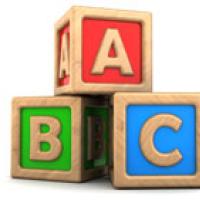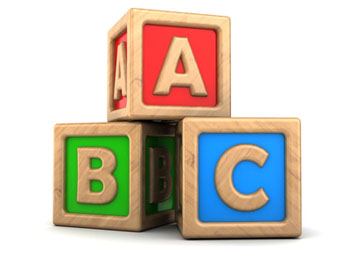
Easy as ABC?
Mathematics is full of stories of geniuses toiling away in isolation before presenting the world with a monumental result that takes years for everyone else to understand. A famous example is Fermat's last theorem, a 350-year old problem that was solved in the 1990s by Andrew Wiles after years of secretive work. Another is the Poincaré conjecture, proved in the 2000s by the reclusive Grigory Perelman who later refused all reward and recognition for his work.

Shinichi Mochizuki.
This summer the world of number theory made a renewed effort to understand another such result, first published in 2012 by the mathematician Shinichi Mochizuki. Mochizuki had spent many years working in private on a famous problem known as the ABC conjecture. His papers, which run to over 500 pages, purport to prove the conjecture, but turned out to be impenetrable. There were too many new formalisms and too much unfamiliar terminology for other mathematicians to handle. Mochizuki didn't help by refusing to travel outside of Japan to explain his work. A conference that took place in Oxford last December, without Mochizuki, failed to elucidate the proof, though it did give people a deeper insight into his methods. It wasn't until this summer, nearly four years after publishing the papers, that Mochizuki offered some more pentrable guidance at a conference in Kyoto. And although his proof is far from understood, attending mathematicians expressed some hope that they will eventually get there.
The ABC conjecture cuts right to the heart of number theory by linking its two most basic operations: addition and multiplication. Multiplication is intimately linked to those favourite friends of number theorists, the prime numbers. Primes are natural numbers that are only divisible by themselves and $1.$ Examples are $2$, $3$, $5$, $7$ and $11.$ A famous result that was already known to the ancient Greeks states that every natural number can be written as a product of primes, for example $$4 = 2 \times 2,$$ $$9 = 3 \times 3,$$ and $$12 = 2 \times 2 \times 3.$$ The result is the reason why multplication and primes go hand in hand. For example, if you know the prime factors of two numbers $a$ and $b$, you immediately know the prime factors of their product $$c=a \times b.$$ They are simply the prime factors of $a$ and the prime factors of $b$ taken together. As an example, if $a=4=2^2$ and $b=9=3^2$, you immmediately know that the prime factors of the product ($36$) are $2$ (twice) and $3$ (twice): $$4 \times 9 = 2^2 \times 3^2 = 36.$$ When it comes to addition, though, the primes aren't quite so amenable. Suppose you have three numbers $a,$ $b,$ and $c$ such that $$a+b=c.$$ There's nothing obvious you can say about the prime factors of the three numbers in this case. If $a=4$ and $b=9$ as above, then $$c=a+b=13,$$ which is itself prime. In this case the result of the sum ($c$) involves a larger prime ($13$) than both $a$ and $b$ (which involve primes $2$ and $3$.) But this isn't always the case. If $a=4$ and $b=5$ then the result of the sum $$c=4+5=9=3^2,$$ only involves a prime ($3$) that nestles in size between those appearing in $a$ and $b$ ($2$ and $5$). Is it possible to say anything at all about the primes appearing in $c$ compared to those appearing in $a$ and $b$? One way of gauging the size of the primes that divide three numbers $a,$ $b,$ and $c$ is to multiply all their prime factors together, but only keeping one copy of each. For $a=4=2^2,$ $b=5$ and $c=9=3^2$ the prime factors are $2$ (twice), $5,$ and $3$ (twice). Multiplying them together but only using one copy of each gives $$2\times 3\times 5 = 30.$$
Not quite as easy as ABC.
Further reading
You can read a lovely, and more detailed, article about the ABC conjecture and its purported proof in Quanta Magazine.
Comments
Anonymous
Great explanation, thank you!